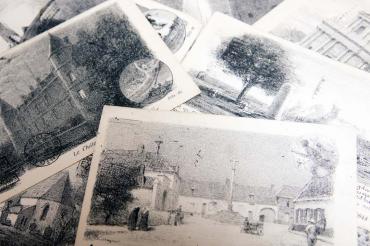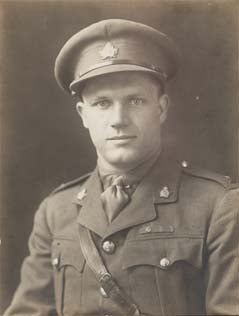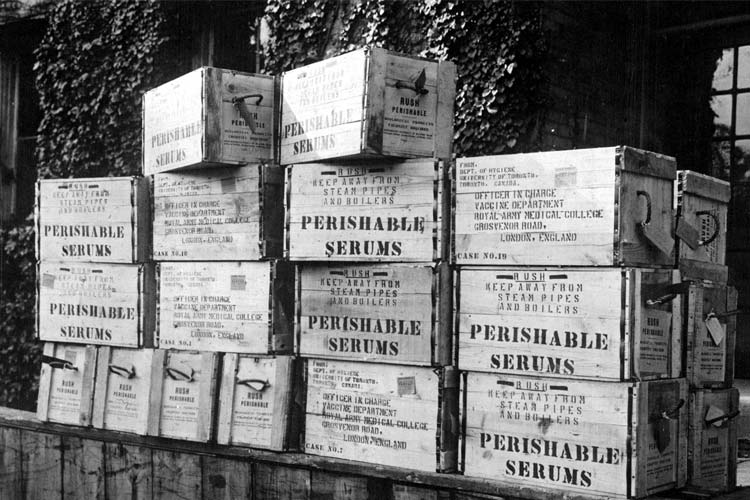Courage and sacrifice: A look back at U of T during the First World War

Published: November 9, 2018
At the outset of the First World War in 1914, an unfinished theatre in the basement of Hart House was commandeered for trench warfare drills. The set – painted to depict a battered Belgian village –provided the backdrop for rifle practice by students who had enlisted in the Canadian Officers' Training Corps. The set designer, Lieutenant Lawren Harris, would go on to become one of the famed landscape artists in Canada’s Group of Seven.
It was one of the more fascinating periods of the University of Toronto's storied history, as recounted in The University of Toronto: A History by author Martin L. Friedland, University Professor Emeritus in the Faculty of Law. In his chapter on the Great War, Friedland captures not only the heroics and sacrifices of those who saw active service, but also the ingenuity and enterprise of students and faculty who supported the war effort from home. By Nov. 11, 1918,“the long agony was over,” Friedland writes, quoting from the U of T's official Roll of Service.
But there were profound and lasting effects. On the 100th anniversary of the end of the First World War, his account provides a compelling refresher:
- While no amount of training could prepare young U of T recruits for the horrors they would face, there were incredible acts of courage. Major Thain MacDowell (pictured left, courtesy of U of T Archives) won the Victoria Cross for his actions at Vimy Ridge, where, despite being separated from the rest of his unit, he and two other men took control of two German machine guns. They chased a fleeing gunner down a tunnel, only to encounter 77 more German soldiers. “MacDowell convinced them they were surrounded by a larger force, and so brought about their surrender,” Friedland writes.
- Physicians put themselves in the line of fire to deliver new treatment methods to the ill and wounded. Surgeon Bruce Robertson, a U of T medical graduate, took his modern blood transfusion knowledge to the front lines at a time when physicians from allied countries were still routinely replacing lost blood with saline solutions. Two influential articles by Robertson, published in the British Medical Journal, changed attitudes about the use of blood transfusions for saving lives, Friedland writes.
Read: From heartbreaking letters to triumphant trophies: 12 objects that tell the story of U of T during the Great War
Then and now: Take a look at these photos of the First World War on campus
Neither upbeat nor sombre: U of T alumnus commissioned to compose new carillon piece to mark First World War
Where and when to attend Remembrance Day events across U of T's three campuses

Crates containing serums made by Connaught Laboratories, created en masse to assist the war effort (photo courtesy of U of T Archives)
-
Public health pioneer John FitzGerald, founder of Connaught Laboratories, overcame the U of T’s initial reluctance to become involved with a commercial venture and incorporated his development of antitoxins into the department of hygiene. Robert Falconer, U of T president at the time, received $5,000 in support from the federal government – the first grant ever received by U of T from the federal government for laboratory work. It went towards production of tetanus antitoxin, as well as smallpox and typhoid vaccines, and, according to the U of T hygiene professors, reversed the trend of more Canadian men dying of disease than of wounds in France.
-
On the home front, with so many of their male classmates and professors enlisting in the medical army corps or working in field hospitals, the number and proportion of women in the Faculty of Medicine increased considerably. At Victoria College, women outnumbered men by the end of the 1916 academic year and the number of women in junior faculty positions at the university had increased from 15 to 60 by the end of the war. Almost all of the students who remained on campus during the war years signed up for national service, taking on the work of men who had gone overseas. Classes ended a month earlier than usual so female students could plant, harvest and sell farm crops.
-
Throughout, students became accustomed to unusual sights – a Sopwith Camel aircraft in front of University College, for instance. The campus had become a training ground for the British Royal Flying Corps and tent cities cropped up to accommodate the airmen. Canada did not have its own air force at the time, so Canadians and Americans had to join the British outfit if they wanted to fly. American novelist William Faulkner, who was 20 at the time, trained at U of T, where some of the lectures were delivered by members of the engineering faculty.
-
The Faculty of Engineering engaged in organized industrial research for the first time. Many professors also contributed directly to the war effort, using their expertise and lab equipment to test chemical explosives or the steel casings of shells. In 1918, the faculty of engineering obtained Canada’s first wind tunnel, which allowed the testing of aircraft by simulating flight without risk to the pilot.
-
Overseas, the casualties were horrendous. Friedland writes that about 10 per cent of the 6,000 U of T people who went to war lost their lives and likely an equal number were wounded, gassed or captured. As the veterans returned to campus, U of T psychology professor E.A. Bott developed rehabilitation methods to treat not only the physical wounds, but also the mental wounds. His colleagues in the engineering faculty became involved in the rehab efforts, training more than 300 women as occupational therapists. Surgeon Alexander Primrose, who helped form the Ontario Society for Occupational Therapists shortly after the war, wrote that the work of the therapists helped shorten the patients’ recovery time.
-
One hundred years ago at U of T, on Nov. 11, “the buildings were closed, and for a day, all gave themselves up to common rejoicing,” records the Roll of Service.
Read more about the First World War at U of T:
- How students trained in combat-like conditions in the basement of Hart House with a real trench and mural of a Belgian village painted by Lawren Harris.
- How U of T women became “farmerettes” in the summer – helping out in the fields while male farmers were off at war.
- In 1914, 32 per cent of the British wounded contracted tetanus. The British and Allied command looked to the University of Toronto for help.
- This U of T teacher used his sculpting skills to help surgeons rebuild soldiers’ noses and jaws.
- Did you know that glow worms were among the millions of animals used in the First World War? Also, read about John McCrae, the author of In Flanders Fields, and his horse.
- The letter home from Frederick Banting, who went on to discover insulin.



